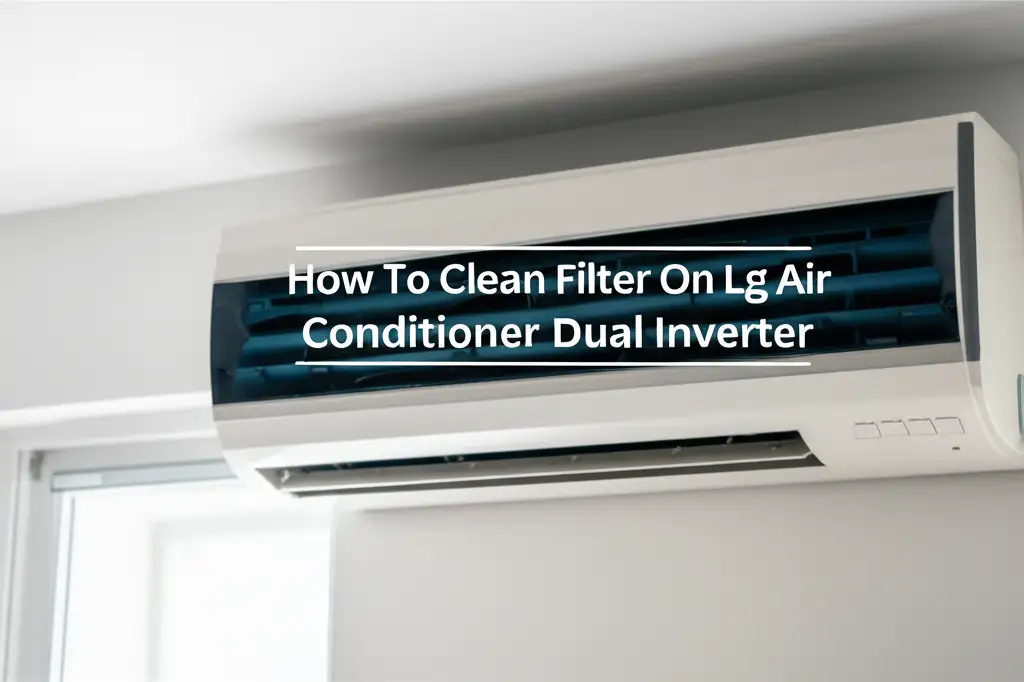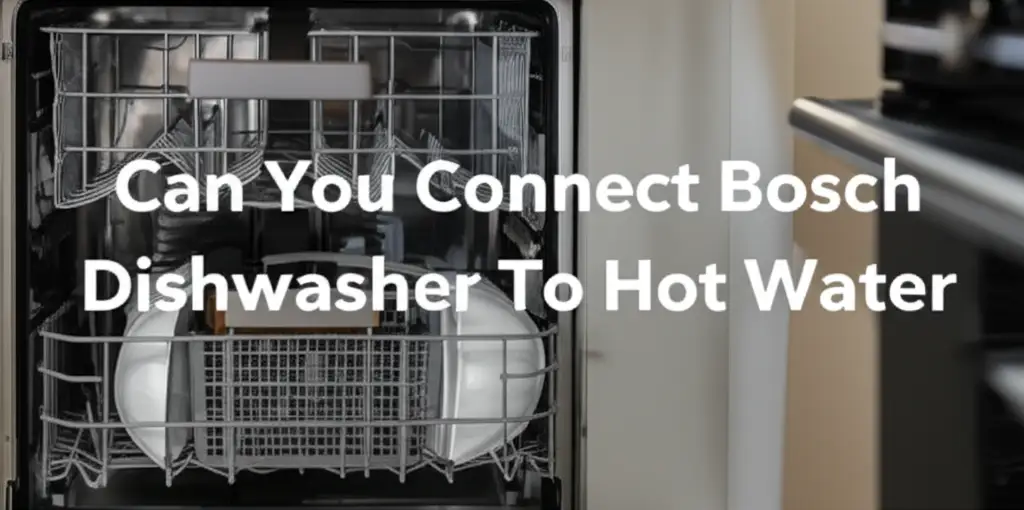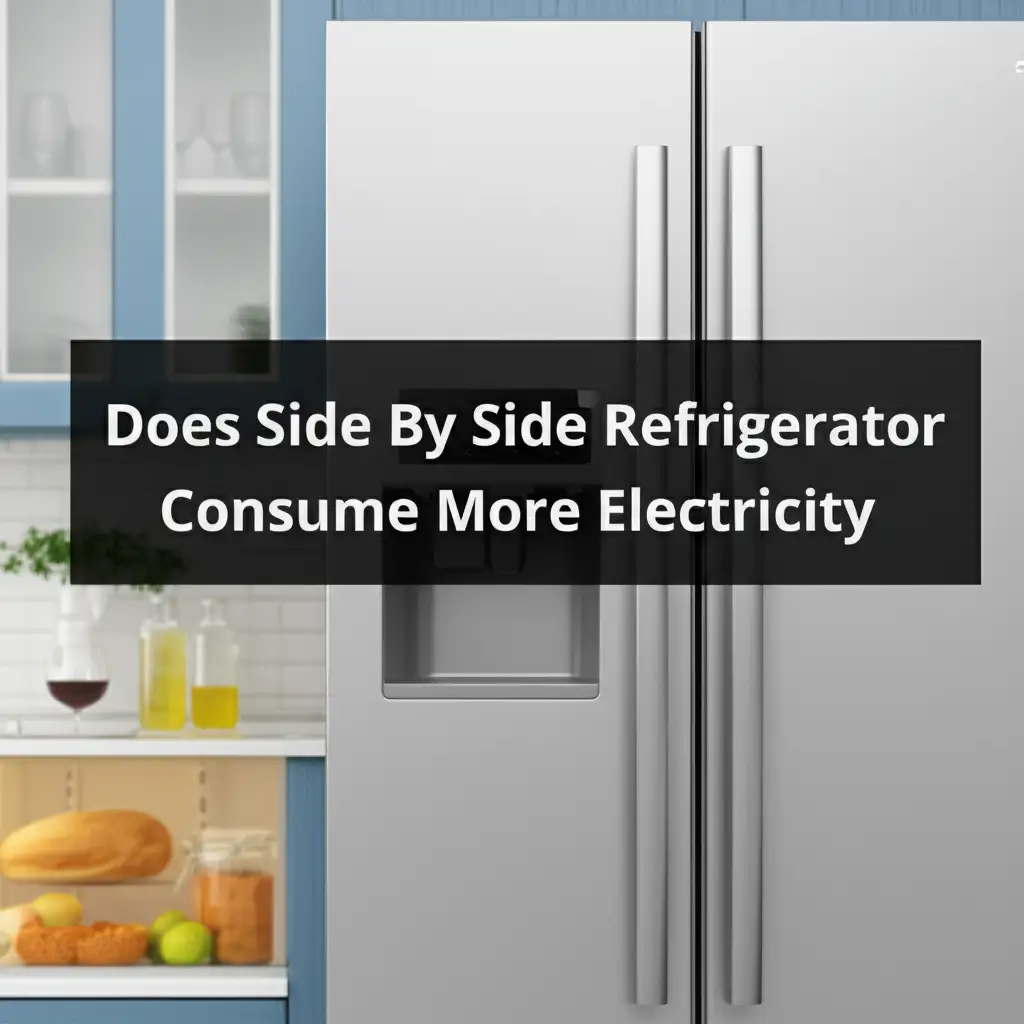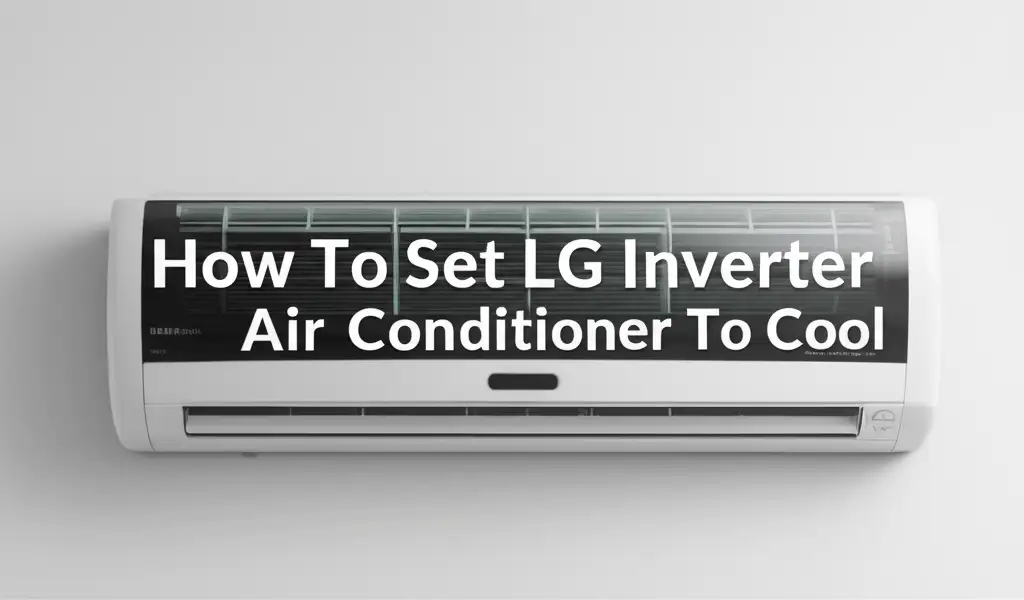· Todd Martin · Home Appliances · 20 min read
How Much Electricity Does An Inverter Air Conditioner Use
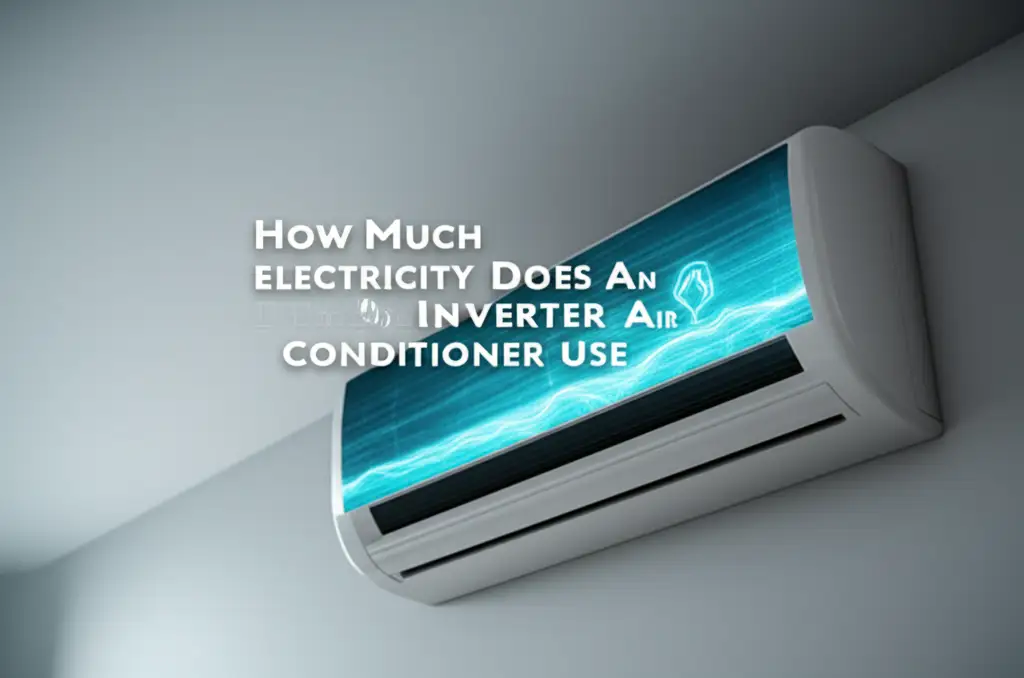
Unveiling Inverter AC Electricity Use
Imagine a hot summer day. Your home feels like an oven. You want to turn on the air conditioner, but a thought stops you. “How much electricity does an inverter air conditioner use?” This is a common question for many homeowners. Understanding your AC’s power consumption is key to managing your utility bills.
Inverter air conditioners are a popular choice for cooling homes today. They are known for their efficiency. I often recommend them to friends seeking comfort without huge electricity costs. This article will explain exactly how much electricity an inverter air conditioner uses. We will cover the factors influencing its power consumption. You will also learn practical ways to save energy and keep your home cool.
Takeaway
- Inverter ACs save more electricity than traditional models.
- Factors like size, SEER rating, and usage habits affect consumption.
- Regular maintenance significantly boosts energy efficiency.
- Smart usage tips can further reduce your electricity bills.
- Calculating kWh helps estimate your running costs.
An inverter air conditioner uses less electricity than a conventional model. It adjusts its compressor speed to match cooling needs. This avoids constant on-off cycling. As a result, it consumes only the power required to maintain your desired temperature. This method significantly reduces peak power draw and overall energy consumption over time.
Understanding Inverter AC Technology
Inverter air conditioners operate differently from traditional models. This difference directly impacts their electricity usage. I find this technology quite clever. It helps keep homes comfortable without wasting energy.
A conventional air conditioner has a compressor that runs at full speed or is completely off. When you set a temperature, the AC turns on at 100% capacity. It then cools the room rapidly. Once the desired temperature is reached, the compressor switches off entirely. When the temperature rises again, the compressor kicks back on at full power. This constant stopping and starting uses a lot of electricity. Each startup surge draws a significant amount of power. This stop-start cycle can be inefficient.
In contrast, an inverter air conditioner uses a variable-speed compressor. This means the compressor can adjust its speed. It does not just turn on and off. Instead, it can run at lower speeds when less cooling is needed. For example, if your room is almost at the target temperature, the inverter AC will slow down its compressor. It maintains the temperature with minimal power. This continuous, modulated operation avoids energy-intensive startup surges. It also maintains a more consistent temperature. This leads to greater comfort and substantial energy savings. The variable speed also allows the unit to ramp up quickly if more cooling is needed, then dial back down. I find this smooth operation much more pleasant.
Factors Affecting Inverter AC Electricity Usage
The amount of electricity an inverter air conditioner uses is not a fixed number. Several factors influence its power consumption. Understanding these helps you manage your energy bills. I always consider these points when evaluating my own energy use.
One major factor is the unit’s cooling capacity and SEER rating. Cooling capacity is measured in BTUs (British Thermal Units). A larger room needs a higher BTU unit. A higher SEER (Seasonal Energy Efficiency Ratio) rating means the unit is more efficient. A SEER 20 unit will use less electricity than a SEER 15 unit for the same cooling output. Always check the SEER rating before buying an AC unit. It is a clear indicator of efficiency.
Your local climate and external temperature also play a big role. An inverter AC will work harder and use more electricity in very hot, humid conditions. If the outdoor temperature is extreme, the unit needs more power to achieve your desired indoor temperature. Conversely, in milder weather, it can run at lower speeds and consume less. Where you live makes a difference.
Home insulation and air sealing greatly impact how hard your AC works. A well-insulated home keeps cool air inside. This means your inverter AC does not need to run as often or as powerfully. Poor insulation allows heat to seep in. This forces the AC to work harder and use more electricity. Proper sealing of windows and doors also prevents air leaks. I have seen firsthand how much good insulation can save on bills.
Your personal usage habits directly influence consumption. Setting the thermostat very low will make the AC run continuously at higher speeds. This uses more electricity. Setting it at a comfortable, yet reasonable temperature, like 75-78°F, allows the inverter to modulate and save power. Using features like “eco mode” or “sleep mode” also helps reduce consumption. Additionally, the number of hours you operate the AC per day directly adds to your electricity bill.
Finally, the size of the room versus the AC unit’s capacity matters. An oversized AC unit will short-cycle. It cools the room too quickly then turns off. An undersized unit will run constantly but struggle to cool the room effectively. Both scenarios lead to inefficiency and higher electricity use. Choosing the right size AC for your space is crucial for optimal performance and lower bills.
Comparing Inverter vs. Conventional AC Electricity Use
Understanding the fundamental difference in how inverter and conventional air conditioners operate helps explain their energy consumption. I often explain this to people looking to upgrade their cooling systems. The savings are real and add up over time.
Conventional ACs are like an on/off switch. Their compressor starts at full power to cool a room. Once the set temperature is reached, the compressor shuts down completely. When the temperature rises slightly, it kicks back on at full power again. This constant cycling is energy-intensive. Each time the compressor starts, it draws a significant surge of electricity. This initial power draw is much higher than its running power. This “stop-start” method is less efficient overall, especially in varying conditions. The unit is either consuming maximum power or no power at all.
In contrast, inverter ACs use a variable-speed compressor. This means the compressor does not just turn on or off. Instead, it adjusts its speed and power output precisely to match the cooling demand. For example, if your room is just slightly warm, the inverter AC will run its compressor at a lower speed. It maintains the temperature with minimal power. If it’s very hot, it can ramp up to full capacity. Once the desired temperature is reached, it will then slow down to a lower, sustained speed. It simply maintains the temperature without ever completely shutting off. This avoids those high startup power surges. This continuous, modulated operation results in much smoother temperature control. It also uses significantly less electricity over time.
Let’s look at a simple scenario. Imagine a conventional 1.5-ton AC unit. It might consume around 1500 watts when running. Every time it cycles on, it draws this full power. An inverter 1.5-ton AC might also draw 1500 watts at peak. However, it will spend most of its time operating at a lower capacity, perhaps using only 500-800 watts to maintain the temperature. Over an hour, the inverter unit will use far less total electricity because it avoids those repeated high-power startups. This leads to considerable energy savings over a cooling season. If you want to know more about the specific wattage, you can check how many watts does an inverter air conditioner use per hour. This continuous operation also results in less wear and tear on the compressor.
Calculating Your Inverter AC’s Energy Consumption
Calculating how much electricity your inverter AC uses can help you estimate your running costs. This is not hard to figure out. I use these steps myself to better understand my home’s energy footprint.
First, you need to know your AC unit’s wattage. This information is usually found on the unit’s label or in its specifications manual. Inverter ACs have a range of wattages they can operate at. Look for the average or nominal wattage, or the EER (Energy Efficiency Ratio) rating, which helps determine efficiency. If you know the EER and cooling capacity (BTUs), you can calculate the wattage. For example, a 12,000 BTU AC with an EER of 10 would consume roughly 1200 watts (12,000 BTU / 10 EER = 1200 watts). However, an inverter AC might operate at 300-1500 watts depending on demand. Let’s use an average operating wattage for our calculation, say 800 watts for a 1.5-ton unit.
Next, you convert watts to kilowatt-hours (kWh). This is the standard unit electricity companies use for billing. One kilowatt-hour equals 1,000 watts used for one hour. So, if your inverter AC uses an average of 800 watts per hour, it uses 0.8 kWh per hour (800 watts / 1000).
Now, consider how many hours per day you run your AC. Let’s say you run it for 8 hours a day.
- Daily consumption: 0.8 kWh/hour * 8 hours/day = 6.4 kWh per day.
Then, calculate monthly consumption. If you run it for 30 days a month:
- Monthly consumption: 6.4 kWh/day * 30 days/month = 192 kWh per month.
Finally, find your electricity rate from your utility bill. This is usually expressed in dollars per kWh. Let’s assume your rate is $0.15 per kWh.
- Monthly cost: 192 kWh/month * $0.15/kWh = $28.80 per month.
Remember, these are average figures. Actual consumption can vary. Factors like outside temperature, thermostat settings, and home insulation will influence the exact wattage and hours of operation. An inverter AC’s ability to run at lower capacities means its average wattage over time will be less than a conventional unit’s. This is where the savings come from. For more detailed cost breakdowns, you might find it useful to explore how much does an inverter air conditioner cost to run.
Optimizing Your Inverter AC for Lower Electricity Bills
You can do many things to make your inverter air conditioner even more efficient. These simple steps can help lower your electricity bills. I use these tips in my own home, and they truly make a difference.
First, set your thermostat wisely. It is tempting to set the temperature very low. However, this forces your AC to work harder. Aim for a comfortable yet reasonable temperature. Most energy experts suggest 75-78°F (24-26°C) when you are home. When you leave, increase the temperature a few degrees or use a programmable thermostat. Your inverter AC will work at a lower capacity to maintain a slightly higher temperature, saving energy. Avoid drastic temperature changes, as this will make the inverter ramp up.
Second, use smart features and modes. Many inverter ACs come with “Eco Mode” or “Sleep Mode.” These modes adjust the temperature gradually or optimize for energy savings during specific times. Wi-Fi enabled units let you control your AC remotely. You can turn it off when you forget or pre-cool your home before you arrive. Using a smart thermostat can learn your schedule and optimize cooling for you. This prevents unnecessary running.
Third, reduce heat gain in your home. Your AC unit works to remove heat. If less heat enters your home, your AC works less. Close blinds and curtains during the hottest parts of the day. This blocks sunlight from warming your rooms. Use weatherstripping on doors and windows to seal air leaks. Ensure your home has proper insulation. These actions keep cool air inside and hot air outside. They reduce the burden on your AC.
Fourth, use fans alongside your AC. Ceiling fans or portable fans can make a room feel cooler by circulating air. This allows you to set your thermostat a few degrees higher. The fan’s electricity use is minimal compared to the AC. Using both can enhance comfort and reduce overall AC run time. Just remember to turn off fans when you leave the room, as they cool people, not spaces.
Fifth, ensure proper airflow. Do not block the indoor unit’s air vents with furniture or curtains. Ensure the outdoor unit is not obstructed by debris or plants. Good airflow means your AC can operate efficiently without struggling. This applies to both the intake and exhaust.
By following these simple practices, you can maximize the energy efficiency of your inverter AC. This results in noticeable savings on your monthly electricity bill.
The Role of Maintenance in Energy Efficiency
Maintaining your inverter air conditioner is crucial for its energy efficiency. A well-maintained unit uses less electricity. Neglecting maintenance can cause your AC to work harder and consume more power. I always stress the importance of regular checks.
The most critical maintenance task is cleaning or replacing air filters. Filters prevent dust and debris from entering the AC system. Over time, these filters get clogged with dirt. A clogged filter restricts airflow. This forces the AC to exert more effort to pull air through, increasing electricity consumption. I recommend checking your filter every month and cleaning or replacing it every 1-3 months. It’s a simple task that makes a big difference. For LG Dual Inverter models, you might find this guide helpful: how to clean filter on LG Dual Inverter Air Conditioner.
Next, keep the outdoor unit clean. The outdoor unit houses the condenser coils and fan. These components dissipate heat from your home. If the coils are dirty or covered with leaves, grass clippings, or other debris, they cannot release heat efficiently. This makes the compressor work harder. Regularly clear away any obstructions around the unit. Gently rinse the coils with a garden hose once or twice a year. You can learn more about general cleaning here: how to clean air conditioner.
Ensure proper airflow around both units. The indoor unit’s vents should not be blocked by furniture or curtains. For the outdoor unit, allow at least 2 feet of clear space around it. This ensures proper air circulation for heat exchange. Restricted airflow reduces efficiency.
Consider professional servicing once a year. An HVAC technician can perform a thorough check-up. They will clean coils, check refrigerant levels, inspect electrical connections, and lubricate moving parts. Low refrigerant levels, for example, can significantly increase electricity usage. A professional can identify and fix small issues before they become expensive problems. They ensure your inverter AC runs at peak performance. This annual tune-up truly pays for itself in energy savings and extended unit lifespan.
Ignoring maintenance can lead to various issues. These include reduced cooling capacity and increased energy consumption. It can also shorten the lifespan of your unit. Proper care ensures your inverter AC continues to operate efficiently. This saves you money on electricity bills for years to come.
Advanced Features and Smart Home Integration
Modern inverter air conditioners offer advanced features that can further optimize electricity usage. Integrating your AC with smart home systems can provide even greater control and savings. I find these technologies incredibly useful for making my home more efficient.
Many inverter ACs now come with built-in Wi-Fi connectivity. This allows you to control your unit using a smartphone app. You can turn the AC on or off, adjust the temperature, or change modes from anywhere. Imagine leaving work on a hot day. You can turn on your AC remotely. Your home will be cool when you arrive. This prevents your AC from running unnecessarily all day. This remote control capability offers convenience and energy savings.
Programmable and smart thermostats are excellent companions for inverter ACs. A programmable thermostat lets you set schedules for cooling. For example, you can program it to raise the temperature when you are at work and lower it before you return. Smart thermostats go a step further. They learn your habits and preferences. They can adjust temperatures automatically based on your schedule, local weather, and even whether you are home or not (using geofencing). Some smart thermostats can integrate with other smart home devices. They might turn off your AC if a window is left open. This level of automation significantly reduces wasted energy.
Some advanced inverter ACs feature presence detection sensors. These sensors can detect if anyone is in the room. If the room is empty for a certain period, the AC might automatically adjust the temperature or switch to an energy-saving mode. When someone re-enters, it returns to the desired setting. This intelligent operation prevents cooling empty rooms. This saves energy without any effort from you.
Energy monitoring features are also becoming more common. Some AC units or smart thermostats can track and display your real-time electricity consumption. This data empowers you to see exactly how much electricity your inverter air conditioner uses. You can then make informed decisions to adjust your usage habits. This transparency helps you identify peak consumption times and areas for improvement. I love being able to see my energy usage in real-time.
Integrating your inverter AC into a smart home ecosystem enhances its efficiency. It provides greater comfort and control. These features help you manage your electricity consumption more effectively. They contribute to lower utility bills while maintaining a perfectly comfortable indoor environment.
When Your Inverter AC Uses More Electricity Than Expected
Even with an efficient inverter AC, you might sometimes notice higher electricity bills. Several factors can lead to unexpected spikes in power consumption. I often troubleshoot these issues for friends and family.
One common reason is extreme weather conditions. During heatwaves, your inverter AC must work much harder. It might run at higher capacities for longer periods. This increases its average wattage. This can significantly increase your electricity consumption compared to milder days. The unit is simply responding to a greater cooling load. It’s working as it should, but the conditions demand more energy.
Poor home insulation or air leaks can also be major culprits. If your home loses cool air quickly, your AC will run almost continuously. It struggles to maintain the set temperature. This is like trying to fill a bucket with a hole in it. Check for drafts around windows and doors. Ensure your attic and walls have adequate insulation. Addressing these issues will make your inverter AC operate more efficiently.
Incorrect sizing of the AC unit is another factor. An undersized unit will run constantly at full capacity but may not cool your space effectively. This leads to continuous high power draw and poor comfort. Conversely, an oversized unit might short-cycle. It cools the room too fast, shuts off, then quickly restarts. While inverter ACs handle short cycling better than conventional ones, it can still reduce efficiency if the unit is drastically too large. Choosing the right BTU for your space is essential.
Lack of regular maintenance will definitely increase electricity usage. A dirty air filter restricts airflow. Dirty coils prevent efficient heat exchange. Low refrigerant levels force the compressor to work harder. These issues make your AC less efficient and use more power. This is why I always emphasize the importance of cleaning filters and coils, and scheduling professional check-ups. Neglecting these basic steps can negate the energy-saving benefits of an inverter AC. If you have an air source heat pump, similar principles apply; you might find this article useful: why is my air source heat pump using so much electricity.
Finally, your thermostat settings and usage habits can be the cause. If you consistently set your thermostat very low or make frequent, drastic temperature changes, your inverter AC will spend more time at higher power levels. Consider setting a slightly higher, but still comfortable, temperature. Use programmable or smart features to optimize running times. Small adjustments to your habits can lead to noticeable savings.
By addressing these potential issues, you can ensure your inverter AC operates as efficiently as designed. This helps keep your electricity bills in check.
Longevity and Environmental Impact of Inverter ACs
Beyond electricity usage, it is helpful to consider the longevity and environmental impact of inverter air conditioners. These aspects contribute to their overall value. I believe they are important considerations for any homeowner.
Inverter AC units generally have a longer lifespan compared to conventional models. This is due to their variable-speed compressor. A conventional AC’s compressor constantly cycles on and off at full power. This creates more wear and tear on the components. The inverter’s compressor, however, runs more smoothly and consistently. It avoids the stress of frequent startups and shutdowns. This reduces mechanical strain. As a result, inverter compressors tend to last longer. This means you replace your unit less often, saving money in the long run.
The environmental impact of inverter ACs is also a significant advantage. Their primary benefit is reduced electricity consumption. Generating electricity often involves burning fossil fuels, which releases greenhouse gases. By using less electricity, inverter ACs contribute to a smaller carbon footprint. This helps combat climate change. They are a greener choice for home cooling. Many newer models also use more environmentally friendly refrigerants, like R32, which has a lower global warming potential than older refrigerants.
The sustained, lower-power operation of inverter ACs also leads to reduced noise pollution. Since the compressor does not constantly ramp up to full speed and shut down, the outdoor unit operates much more quietly. This is beneficial for your peace of mind and for your neighbors. A quieter operation enhances overall comfort.
Furthermore, the precise temperature control offered by inverter technology leads to greater comfort. Unlike conventional units that cycle between feeling too cold and then too warm, inverter ACs maintain a very stable temperature. This consistent comfort means you are less likely to constantly adjust settings. This also contributes to energy efficiency.
Choosing an inverter air conditioner is an investment. It offers long-term benefits in terms of energy savings, extended product life, and reduced environmental impact. Their superior technology makes them a smart choice for modern homes.
FAQ Section
Q1: Is an inverter AC worth the extra cost?
An inverter AC often has a higher upfront cost. However, its energy efficiency leads to significant long-term savings on electricity bills. It consumes less power and provides more consistent cooling. The savings over its lifespan usually outweigh the initial investment, making it a worthwhile choice for most homeowners.
Q2: How much less electricity does an inverter AC use compared to a non-inverter?
An inverter AC can use 30-50% less electricity than a conventional non-inverter AC. This is because its compressor adjusts speed instead of cycling on and off. It avoids energy-intensive startup surges. This continuous, modulated operation significantly reduces overall power consumption.
Q3: Does an inverter AC use more electricity on startup?
No, an inverter AC typically uses less electricity on startup compared to a non-inverter unit. Conventional ACs draw a high surge of power when their compressor kicks on. Inverter ACs gradually ramp up their compressor speed. This avoids high peak power draws.
Q4: Can I use an inverter AC with solar power?
Yes, inverter ACs are an excellent match for solar power systems. Their lower and more consistent electricity consumption makes them ideal for solar setups. They put less strain on your solar inverter and battery storage. This maximizes the effectiveness of your renewable energy source.
Q5: What SEER rating should I look for in an inverter AC?
Look for a SEER rating of at least 15 for good efficiency. Higher SEER ratings, like 20 or above, indicate even greater energy efficiency. The higher the SEER, the more energy-efficient the unit is. This translates directly to lower operating costs over time.
Q6: How long do inverter ACs typically last?
Inverter ACs often last longer than conventional units, typically 10-15 years or more. Their variable-speed compressors experience less wear and tear from constant cycling. This smoother operation extends the lifespan of critical components. Regular maintenance further extends their durability.
Conclusion
Understanding “how much electricity does an inverter air conditioner use” is essential for managing your home’s energy consumption. Inverter ACs stand out as a superior choice for cooling. They offer significant energy savings compared to conventional models. Their variable-speed compressors adjust to your cooling needs, eliminating wasteful on-off cycles. This means lower electricity bills and a reduced environmental footprint.
By choosing the right size unit, maintaining it regularly, and adopting smart usage habits, you can maximize your inverter AC’s efficiency. Simple steps like cleaning filters, sealing air leaks, and using programmable thermostats make a big difference. Embrace these strategies to enjoy consistent comfort and substantial savings. Make the smart choice for your home and your wallet. Get an inverter air conditioner for optimal cooling efficiency today.


